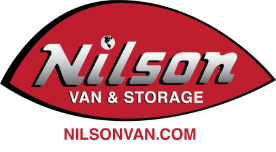
Moving to a new home is exciting and stressful, and when you’re a cat parent, the journey takes on a new set of challenges. Moving with a cat and ensuring their comfort during travel and the transition requires careful planning, a dose of understanding, and a lot of patience. Luckily, we’ve got the valuable cat travel tips you need to get your cat to your destination, acclimate it to a new house, and keep your feline friend calm throughout the moving process.
Preparing for the Move
Moving with a cat involves more than just packing up your belongings. Before the moving day arrives, introduce your cat to its carrier and make it a comfortable space with familiar bedding and toys. Gradually increase your cat’s time in the carrier to help them become accustomed to it. If they’re resistant, try enticing them with their favorite treats.
Cat Travel Tips
When moving day arrives, prioritize your cat’s well-being throughout the process. If traveling by car, ensure the carrier is secure and well-ventilated. Place a towel or blanket inside to offer comfort and security. Many moving companies also provide the option of having pets ride in carriers in the moving truck. With pre-planning, space available with plenty of airflow and ventilation for your cat and its carrier.
During the truck or car ride, especially if it’s a long one, consider the following cat travel tips:
- Keep the carrier restrained to prevent sudden movements.
- Avoid feeding your cat right before the journey to prevent motion sickness.
- Ask your veterinarian for calming or sedating medication if your cat gets especially anxious or stressed in the car.
Your Cat in Your New Home
Once you arrive at your new home, set up a designated space for your cat with their familiar belongings. This could include their bed, litter box, toys, and scratching post. A safe and familiar area will help your cat feel more at ease in their new surroundings. Consider keeping them locked in one bedroom while the movers carry in boxes and furniture to prevent them from getting out of the house through an open door.
Calming Your Cat
Moving is overwhelming for people and can be even more so for cats, as they are creatures of habit. To help your feline friend remain calm during the transition, consider these techniques:
- Spend quality time with your cat to reassure them that everything is okay.
- Avoid leaving them alone in your new home for extended periods in the first few days or weeks to avoid stress or fear of abandonment.
- Play with them with familiar toys and stick to the same food and feeding routines.
- Gradually introduce your cat to different parts of the house, allowing them to explore at their own pace.
Moving with a cat is challenging, but with careful planning and a compassionate approach, you can ease their transition into your new home. From comfortably traveling with a cat to acclimating to a new environment, your thoughtful efforts will go a long way in ensuring your cat’s well-being throughout the entire move process. Talk to the team of professionals at Nilson Van and Storage to schedule a free quote and learn more tips on moving with pets.











